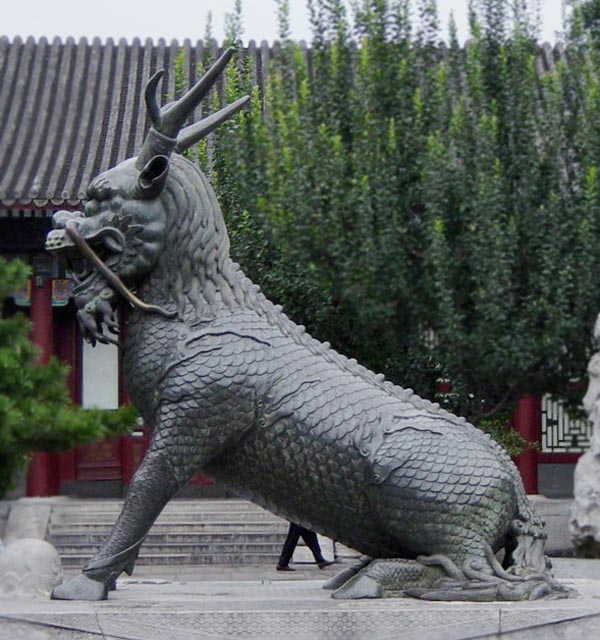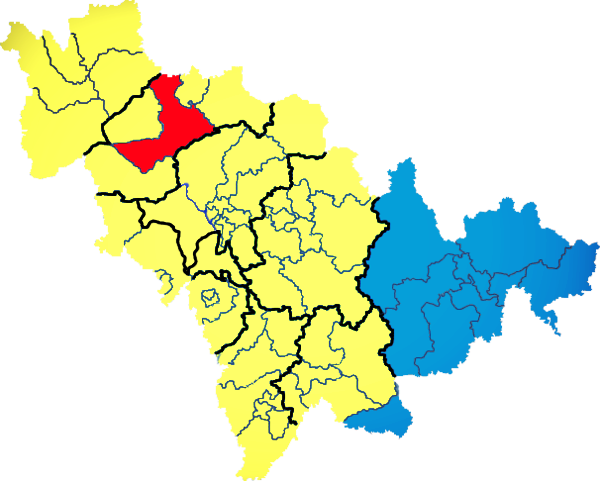|
Tomb Of King Tongmyong
The Tomb of King Dongmyeong (), also known as the Tomb of King Tongmyŏng, is a mausoleum located in near Ryongsan Village, Ryokpo-guyok, Pyongyang, North Korea. One of the tombs is the royal tomb of Jumong (58–19 BC), the founder of the ancient Goguryeo Kingdom, the northernmost of the Three Kingdoms of Korea. King Jumong was given the posthumous name of King Dongmyeong of Goguryeo, Dongmyeong. In total, there are 63 individual tombs of the period. The area around Dongmyeong's grave contains at least fifteen known tombs believed to belong to various vassal lords. The tomb has achieved World Heritage Site, World Heritage status as part of the Goguryeo tombs, Complex of Goguryeo Tombs inscribed by UNESCO in 2004 under Criteria (i), (ii), (iii) and (iv) covering an area of with a buffer zone of . A unique feature of it and the other extant tombs in the area are the wall paintings depicting blossoming List of plants known as lotus, lotuses, indicative of Buddhism practiced and pe ... [...More Info...] [...Related Items...] OR: [Wikipedia] [Google] [Baidu] |
Jangsu Of Goguryeo
Jangsu (394–491, r. 412–491) was the 20th monarch of Goguryeo, the northernmost of the Three Kingdoms of Korea. He was born in 394 as the eldest son of Gwanggaeto. He became the crown prince in 409, and upon his father's death in 412, became the ruler at the age of 18. Jangsu reigned during the golden age of Goguryeo, when it was a powerful empire and one of the great powers in East Asia. He continued to build upon his father's territorial expansion through conquest, but was also known for his diplomatic abilities. "China's split into the Northern and Southern dynasties afforded him an opportunity to diplomatically maneuver these two bitterly contending forces to Koguryŏ's advantage." Like his father, Gwanggaeto the Great, Jangsu also achieved a loose unification of the Three Kingdoms of Korea. In addition, Jangsu's long reign saw the perfecting of Goguryeo's political, economic and other institutional arrangements. He is also noted for building the Gwanggaeto Stele, dedica ... [...More Info...] [...Related Items...] OR: [Wikipedia] [Google] [Baidu] |
Japan
Japan is an island country in East Asia. Located in the Pacific Ocean off the northeast coast of the Asia, Asian mainland, it is bordered on the west by the Sea of Japan and extends from the Sea of Okhotsk in the north to the East China Sea in the south. The Japanese archipelago consists of four major islands—Hokkaido, Honshu, Shikoku, and Kyushu—and List of islands of Japan, thousands of smaller islands, covering . Japan has a population of over 123 million as of 2025, making it the List of countries and dependencies by population, eleventh-most populous country. The capital of Japan and List of cities in Japan, its largest city is Tokyo; the Greater Tokyo Area is the List of largest cities, largest metropolitan area in the world, with more than 37 million inhabitants as of 2024. Japan is divided into 47 Prefectures of Japan, administrative prefectures and List of regions of Japan, eight traditional regions. About three-quarters of Geography of Japan, the countr ... [...More Info...] [...Related Items...] OR: [Wikipedia] [Google] [Baidu] |
Korea Under Japanese Rule
From 1910 to 1945, Korea was ruled by the Empire of Japan under the name Chōsen (), the Japanese reading of "Joseon". Japan first took Korea into its sphere of influence during the late 1800s. Both Korea (Joseon) and Japan had been under policies of isolationism, with Joseon being a Tributary system of China, tributary state of Qing China. However, in 1854, Perry Expedition, Japan was forcibly opened by the United States. It then rapidly modernized under the Meiji Restoration, while Joseon continued to resist foreign attempts to open it up. Japan eventually succeeded in opening Joseon with the unequal Japan–Korea Treaty of 1876. Afterwards, Japan embarked on a decades-long process of defeating its local rivals, securing alliances with Western powers, and asserting its influence in Korea. Japan Assassination of Empress Myeongseong, assassinated the defiant Korean queen and intervened in the Donghak Peasant Revolution.Donald Keene, ''Emperor of Japan: Meiji and his World, 1852� ... [...More Info...] [...Related Items...] OR: [Wikipedia] [Google] [Baidu] |
Foreign Languages Publishing House (North Korea)
The Foreign Languages Publishing House (FLPH) is the central North Korean publishing bureau of foreign-language documents, located in the Potonggang-guyok of Pyongyang, North Korea. It employs a small group of foreigners to revise translations of North Korean texts so as to make those texts suitable for foreign-language publication. Its was founded at December 10, 1949. The publishing house is under the control of the Propaganda and Agitation Department of the Workers' Party of Korea, which also makes decisions concerning its staff. Foreign Languages Publishing House maintains the Naenara and Publications of the DPRK web portals, and publishes the periodicals ', '' Korea Today'', '' Foreign Trade of the DPRK'', and the newspaper '' Pyongyang Times''. Foreign Languages Publishing House has a sports team in the Paektusan Prize civil servants games. See also * Foreign Languages Publishing House (Soviet Union), Moscow – similar publisher in Soviet Union * Foreign Languag ... [...More Info...] [...Related Items...] OR: [Wikipedia] [Google] [Baidu] |
Sukjong Of Joseon
Sukjong (; 7 October 1661 – 12 July 1720), personal name Yi Sun (), was the 19th monarch of the Joseon dynasty of Korea. A skilled legislator, he caused multiple changes in political power throughout his reign, by switching among the Namin (Southerners), Seoin (Westerners), Soron and Noron political factions. Biography King Sukjong was born on October 7, 1661, to King Hyeonjong and Queen Myeongseong at Gyeonghuigung. His given name was Yi Sun. He became the Crown Prince Myeongbo in 1667 at age 6, and in 1674, at age 13, he became the 19th ruler of the Joseon Dynasty. King Sukjong was a brilliant politician, but his reign was marked by some of the most intense factional fights in the Joseon dynasty. Sukjong frequently replaced faction in power with another one to strengthen the royal authority. With each change of government, which was called ''hwanguk'' (), literally ''change/switching of the state'', the losing faction was completely driven out of politics with exec ... [...More Info...] [...Related Items...] OR: [Wikipedia] [Google] [Baidu] |
History Of Korea
The Lower Paleolithic era on the Korean Peninsula and in Manchuria began roughly half a million years ago. Christopher J. Norton, "The Current State of Korean Paleoanthropology", (2000), ''Journal of Human Evolution'', 38: 803–825. The earliest known Korean pottery dates to around 8000 BC and the Neolithic period began thereafter, followed by the Bronze Age by 2000 BC, Jong Chan Kim, Christopher J Bae, "Radiocarbon Dates Documenting The Neolithic-Bronze Age Transition in Korea" , (2010), ''Radiocarbon'', 52: 2, pp. 483–492. and the around 700 BC. The |
Kiringul
Kiringul () is a cave in North Korea said to have been the home of the '' kirin'' (''Qilin'' in Chinese), a mythical chimeric beast that was reputedly ridden by King Dongmyeong of Goguryeo in the 1st century BC. In November 2012, the state-owned Korean Central News Agency reported that the site had been discovered in Moranbong near the North Korean capital, Pyongyang. The North Korean government claims that the discovery proves that Pyongyang is the historic capital of Korea. Analysts outside North Korea have put the announcement in the context of long-running North Korean attempts to link the country's regime with the ancient Korean kings, and so position it as the legitimate heir to the legacy of Goguryeo. Discovery On 29 November 2012, the North Korean state-owned Korean Central News Agency reported that archaeologists "recently reconfirmed a lair of the unicorn by King Tongmyong, founder of the Koguryŏ oguryeoKingdom (BC 277–AD 668)." The discovery was said to have been ... [...More Info...] [...Related Items...] OR: [Wikipedia] [Google] [Baidu] |
Taesongsan
Taesŏngsan () is a mountain in Taesong-guyok, Pyongyang, North Korea. It has an elevation of . One popular visitor attraction on Taesŏngsan is the outdoor ice rink. Others include the Revolutionary Martyrs' Cemetery and the Korea Central Zoo. In 2022, an ice cream manufacturing facility opened at the foot of Taesŏngsan under Kim Jong Un's order. See also *List of mountains of Korea The following is a list of mountains in Korea: List of mountains in North Korea Pyongyang * Taesongsan () – Chagang Province * Namsan (Chagang), Namsan () – * Obongsan (Chagang), Obongsan () – North Pyongan Province * Myohyangsan () � ... References Geography of Pyongyang Mountains of North Korea {{NorthKorea-geo-stub ... [...More Info...] [...Related Items...] OR: [Wikipedia] [Google] [Baidu] |
Jilin
) , image_skyline = Changbaishan Tianchi from western rim.jpg , image_alt = , image_caption = View of Heaven Lake , image_map = Jilin in China (+all claims hatched).svg , mapsize = 275px , map_alt = Map showing the location of Jilin Province , map_caption = Map showing the location of Jilin Province , coordinates = , subdivision_type = Country , subdivision_name = China , named_for = from ''girin ula'', a Manchu language, Manchu phrase meaning "along the river" , seat_type = Capital , seat = , seat1_type = , seat1 = , parts_type = Divisions , parts_style = para , p1 = 9 Prefectures of China, prefectures , p2 = 60 Counties of China, counties , p3 = 1006 Townships of China, townships , government_type = Provinces of China, Province , governing_body = Jilin Provinci ... [...More Info...] [...Related Items...] OR: [Wikipedia] [Google] [Baidu] |
Ji'an, Jilin
Ji'an (; formerly ) is a county-level city in the southwestern part of Jilin province, People's Republic of China. It is administered by the prefecture-level city of Tonghua and is the southernmost county-level division in the province. Ji'an has an area of and a population of approximately 230,000. The city was given its current status in 1988. Ji'an is separated from Manpo, Chagang Province, North Korea by the Yalu River; it has an international border running . History Archaeological excavations in the Ji'an area have unearthed several Yemaek sites along the Amnok River and its tributary the Hunjiang, which belong to the regional Neolithic and Bronze ages. After the fall of Wiman Joseon to the Han dynasty in 108 BCE, Ji'an was part of Goguryeo County under the administration of Xuantu Commandery. In 3 CE, the second ruler of Goguryeo, King Yuri, moved the state's capital to Gungnae (modern Ji'an) and established the mountain fortress Hwando nearby to defend it. ... [...More Info...] [...Related Items...] OR: [Wikipedia] [Google] [Baidu] |
Gungnae
Gungnaeseong () or Guonei () was the capital of the ancient Korean kingdom of Goguryeo, which was located in Manchuria and the Korean Peninsula. The perimeter of its outer fortress measures 2,686m. It is located in present day Ji'an city, Jilin province, northeast China. Because of its historical importance and exceptional architecture, Gungnae was designated as a UNESCO World Heritage Site in 2004. It is part of the Capital Cities and Tombs of the Ancient Koguryo Kingdom World Heritage Site, together with nearby Hwando Mountain City and the Onyeosan City, in modern northeast China. History Gungnae was chosen to become the capital city by the ruler, Yuri during the 10th month of the year 3 AD. The city was sacked several times until the rise of the 19th ruler, Gwanggaeto the Great, who greatly expanded Goguryeo's territory and made it a formidable power in northeast Asia. When King Gwanggaeto died in 413, his son, Jangsu of Goguryeo, inherited the throne and moved the capi ... [...More Info...] [...Related Items...] OR: [Wikipedia] [Google] [Baidu] |




